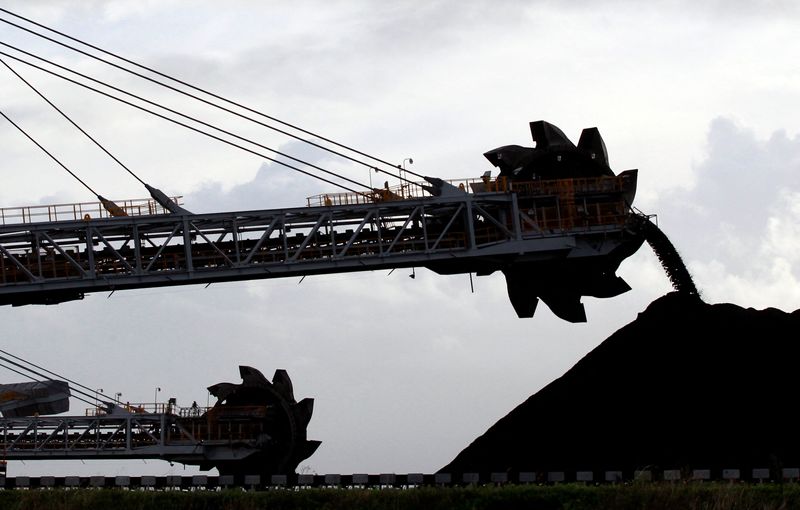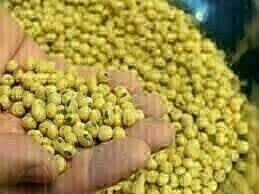
© Reuters. FILE PHOTO: A stacker/reclaimer places coal in stockpiles at the coal port in Newcastle June 6, 2012. REUTERS/Daniel Munoz (AUSTRALIA – Tags: BUSINESS ENERGY)/File Photo
GS
-0.01%
Add to/Remove from Watchlist
Add to Watchlist
Add Position
Position added successfully to:
Please name your holdings portfolio
Type:
BUY
SELL
Date:
Amount:
Price
Point Value:
Leverage:
1:1
1:10
1:25
1:50
1:100
1:200
1:400
1:500
1:1000
Commission:
Create New Watchlist
Create
Create a new holdings portfolio
Add
Create
+ Add another position
Close
ICE
-1.45%
Add to/Remove from Watchlist
Add to Watchlist
Add Position
Position added successfully to:
Please name your holdings portfolio
Type:
BUY
SELL
Date:
Amount:
Price
Point Value:
Leverage:
1:1
1:10
1:25
1:50
1:100
1:200
1:400
1:500
1:1000
Commission:
Create New Watchlist
Create
Create a new holdings portfolio
Add
Create
+ Add another position
Close
Copper
+0.31%
Add to/Remove from Watchlist
Add to Watchlist
Add Position
Position added successfully to:
Please name your holdings portfolio
Type:
BUY
SELL
Date:
Amount:
Price
Point Value:
Leverage:
1:1
1:10
1:25
1:50
1:100
1:200
1:400
1:500
1:1000
Commission:
Create New Watchlist
Create
Create a new holdings portfolio
Add
Create
+ Add another position
Close
NG
-6.61%
Add to/Remove from Watchlist
Add to Watchlist
Add Position
Position added successfully to:
Please name your holdings portfolio
Type:
BUY
SELL
Date:
Amount:
Price
Point Value:
Leverage:
1:1
1:10
1:25
1:50
1:100
1:200
1:400
1:500
1:1000
Commission:
Create New Watchlist
Create
Create a new holdings portfolio
Add
Create
+ Add another position
Close
By Naveen Thukral and Florence Tan
SINGAPORE (Reuters) – Coal and natural gas markets ended 2022 with strong gains on Friday after a global energy crisis triggered by the Russia-Ukraine war stoked prices, and tighter supplies expected in 2023 could fuel more gains.
Industrial metals, iron ore and rubber finished in negative territory, pushed down in 2022 by China’s strict zero-COVID policy and fears of a world recession.
Agricultural markets, including grains and palm oil, jumped to all-time highs in March on adverse weather and pandemic-related supply disruptions, triggering higher food prices and warnings of famine, though those commodities gave up some of their gains in the second half.
“Despite the recent price declines, commodities will still likely finish the year as the best performing asset class,” Goldman Sachs (NYSE:GS) said in its 2023 commodity outlook.
“From a fundamental perspective, the set-up for most commodities next year is more bullish than it has been at any point since we first highlighted the supercycle in October 2020.”
Graphic: Market indices – https://globalrubbermarkets.com/wp-content/uploads/2024/08/coal-gas-lead-2022-commodities-rally-recession-fears-greet-new-year.png
SUPPLY STRAIN
Global gas markets were roiled this year after Russia cut supplies to Europe and a major pipeline was damaged amid the war in Ukraine, leading European countries to import record volumes of non-Russian gas to ensure winter supplies.
The additional demand for liquefied natural gas (LNG) and tighter supplies of piped gas placed enormous strain on the global market, spurring an energy crisis that pushed oil and gas prices to record highs.
Newcastle coal futures soared almost 140% in 2022, the biggest jump since 2008. Global crude topped $139 a barrel in March then cooled as central bank rate hikes threatened to tip economies into recession. Oil settled at $85.91 per barrel on Friday, up 10% on the year.
In Europe, the benchmark Dutch front-month gas contract ended about 8% higher, down from the record highs seen earlier in the year as Europe successfully built up gas stocks.
U.S. gas futures jumped by more than 20% and Dutch wholesale gas prices rose by almost 8%, both up for a third consecutive year.
Graphic: Energy futures 2022 – https://globalrubbermarkets.com/wp-content/uploads/2024/08/coal-gas-lead-2022-commodities-rally-recession-fears-greet-new-year-1.png
Because Europe will continue to import LNG to rebuild gas inventories next year after winter, gas prices are expected to remain elevated as limited new supplies come onstream.
The dismantling of tight pandemic controls in China, the world’s second-largest LNG importer, could also promote economic recovery and greater LNG consumption next year.
However, a European cap on gas prices starting in February could keep a lid on the market and reduce the volatility seen this year.
In industrial metals, copper on the London Metal Exchange is on track to fall 13% this year and aluminium is down about 15%. Both reached record highs in March.
Graphic: Metals performance 2022 – https://globalrubbermarkets.com/wp-content/uploads/2024/08/coal-gas-lead-2022-commodities-rally-recession-fears-greet-new-year-2.png
Spot prices of iron ore bound for China, which consumes about two-thirds of global supply, have fallen about 4% this year, ending near $118 per tonne.
Citi analysts are bearish on nickel and zinc for the next six to 12 months, seeing strong supply growth, and bullish on iron ore and aluminium.
“Iron ore is expected to remain strong in the near term and could follow through in the bull case of a major China credit easing,” they said in a note.
China’s U-turn on COVID policy and its pledge to increase support for the real estate sector helped to support ferrous and non-ferrous metals in December.
Still, optimism has been tempered by the country’s surging COVID infections and risks of global recession in 2023 if central banks, as expected, keep hiking rates.
Nickel, the outperformer in metals, is on course for a 45% rise, its largest since 2010, partly because of a shortage of metal that can be delivered against the LME contract and partly because of volatility created by low volumes and liquidity after a trading fiasco in March.
RISING FOOD PRICES
Benchmark Chicago wheat futures jumped to an all-time high of $13.63-1/2 a bushel in March on supply disruptions. Fewer grain exports from Ukraine further pressured a market already higher on adverse weather and COVID-19 related restrictions. Wheat ended the year up about 3%, however, after a tentative renewal of some Ukrainian exports.
Corn and soybeans hit a decade high, while Malaysia’s benchmark crude palm oil prices climbed to an all-time record. Soybeans and corn both ended the year up around 14%, as severe drought in Argentina raised concerns about South America’s crop.
Graphic: Grains, edible oil prices – https://globalrubbermarkets.com/wp-content/uploads/2024/08/coal-gas-lead-2022-commodities-rally-recession-fears-greet-new-year-3.png
Going forward, food-commodity prices are likely to stay elevated. Wheat production is unlikely to replenish depleted world inventories, at least in the first half of 2023, while crops producing edible oils are suffering from adverse weather in Latin America and Southeast Asia.
“U.S. winter wheat is facing harsh cold weather and, even if the crop improves, we will have those supplies (only) in the second half of 2023,” said a Singapore-based trader at an international trading company.
The rice market, which sat out the rally in grain prices in the first half of the year, got a boost after India, the world’s biggest exporter, decided in September to curb supplies. India’s 5% broken parboiled rice is up almost 6% in 2022 and Vietnam’s 5% broken rice has gained more than 15%.
Among precious metals, gold has lost around 1% in 2022, down for a second year, silver is up almost 3%, platinum has gained 11% and palladium is down 5%.
As worries over recession cloud consumer demand, coffee is among the biggest commodities losers of the year. Robusta fell 24% in 2022 and arabica lost more than a quarter of its value, also impacted by expectations of a bumper crop in top grower Brazil.
Tokyo rubber has lost more than 8% while raw sugar was up more than 6%. ICE (NYSE:ICE) cotton has dropped more than 26% in 2022 on softening demand.
Source: Investing.com

























